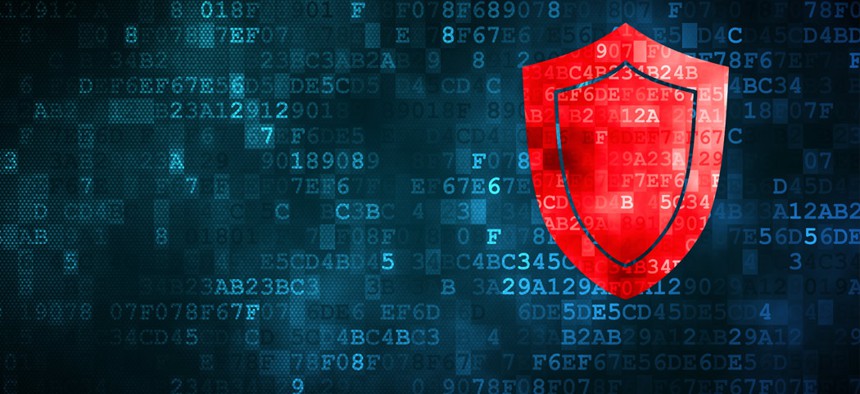Critical infrastructure is a growing cyber target
A former Secret Service CISO, now with Trend Micro, talks about critical infrastructure threats, the "trust deficit" among international partners and the challenge of scaling U.S. cybersecurity expertise.
Eduardo Cabrera is Trend Micro’s vice-president for Cybersecurity Strategy. He directs studies into emerging cyber threats, and develops risk management strategies for the company’s strategic partners like Interpol, the FBI and others. Cabrera is a former Chief Information Security Officer of the U.S. Secret Service.
In an interview with Defense Systems, he broadly addressed the critical infrastructure (CI) threat environment, and urged collaboration—getting governments and their commercial sectors on the same cybersecurity page.
Trend Micro has been instrumental in bringing down several hostile cyber operations, including, with U.K. partner The National Crime Agency, Refud.me and Cryptex Reborn. Working with Interpol, Kaspersky Lab, Microsoft and the Cyber Defense Institute, the SIMDA botnet was also eliminated.
Defense Systems: With CI threats spiraling, there’s a ramped-up urgency to gear up for what some now call “cyberwar.”
Eduardo Cabrera: Threats against all critical infrastructure have steadily been increasing over the last 10 years; however, the level of sophistication has been growing at a much higher pace. Attacks have also become more destructive [as our and the Organization of American States 2015 CI report on the Americas attests.]
DS: And more common; recent assaults on Ukraine's critical infrastructure, for example.
EC: [Such escalations] are more concerning with the increased level of digital connection and dependence. Converged corporate networks and ICS [Internal Control System] networks involved in business needs, such as real-time billing and remote support, have introduced systemic vulnerabilities. These significantly increase avenues of attack.

Eduardo Cabrera
DS: CI probes are still overwhelmingly digital versus physical. Why?
EC: Cyber attacks against critical infrastructure are predominantly digital in nature, but are having physical consequences. Attacks have been primarily focused around targeted cyber-espionage campaigns. However ... advanced threat actors also focus on critical infrastructure supply chains. Threat research has linked Ukrainian CI companies in mining and rail to Ukraine’s power attacks and outages.
DS: Which types of attackers and attacks pose the greatest dangers to the U.S. homeland's critical infrastructure - whether government or privately owned?
EC: Regardless of threat actor motivation, destructive malware attacks, from wiper malware to crypto-ransomware, represent the most clear and present danger to critical infrastructure. Cybercriminals, hactivists, and cyber espionage operatives all show a propensity [to include] destructive malware in their campaigns.
Whether as the primary aim or coupled with a ... multi-stage and multi-vector attack, there is probably no other attack that could so disrupt and degrade critical infrastructure operations in any sector.
DS: Loose affiliations seem to be forming among criminals, terrorist individuals, groups like ISIS and drug gang elements. Where do they, so to speak, “hang out?”
EC: There is no other root cause in raising the collective capability of criminals, terrorists and other advanced threat actors than the evolution of the Deep and Dark Web over the last 10 years. It is the virtual safe haven for them to communicate and collaborate on attacks, and a mature marketplace for malware, contraband and criminal service.
DS: Yours and the OAS’s report last year – which recorded increases in attacks - concludes that public-private CI cyber collaboration in the Americas is vital. Is it in fact increasing?
EC: [Yes.] However, at the center of any effective collaboration is trust. And currently, there is a trust deficit. Collaboration is key to moving the perimeter you defend from your front door to the edge of your neighborhood. Critical infrastructure, regardless of sector needs, is a “global neighborhood watch program” because ... there is always safety in numbers.
DS: The United States itself has large and diverse counter-cyberpenetration forces. Do you see a trust deficit here as well?
EC: Over the last 10 years, there’s been an incredible amount of collaboration and communication among law enforcement, military and the Intelligence Community in efforts to protect the nation and critical infrastructure. Inter-agency cooperation has allowed for a more complete defense based on various missions and threats – cybercrime, terrorism, espionage, and the [Defense Department] for military.
Some the finest men and women in cybersecurity work in government. They are incredibly talented... The problem is scale.
DS: How is scalability best achieved?
EC: The only way ... is through public-private partnerships where trusted information and resource sharing are grossly required. Just as the Deep and Dark Web has enabled our adversaries to scale through trust, we need to do the same
DS: Any opinion on the so-called “unbreakable” quantum cryptography in cyber operations?
EC: Encryption is an obvious problem with no obvious solution.... Instead of picking [a specific tool] we should be picking seats at the table to find solutions.
DS: Are you concerned that infrastructure protection isn’t getting enough attention from the U.S. government or homeland security at large?
EC: I would say yes; however, recent attacks on critical infrastructure may be changing the discussion.
DS: Is the Trend Micro 2015 report on the Americas expected to bear fruit?
EC: Too early to tell since the report was only released last year.
DS: Spear-phishing features heavily in it. What’s its impact on CI operations?
EC: Advanced threat actors do their homework. They analyze the vulnerabilities of the target organization and [certain] people within it. They understand whom they need to target: those with a level of connection – data-privileged users. Spear-phishing can be accomplished because of the abundance of social media. Much information about the users is available via social media, so cybercriminals can easily engineer malicious payload and links targeted to them...
Then, all the individual has to do is click on the attachment/link. Once malware is dropped onto a targeted computer the malware – depending on the sophistication – can execute and begin controlling communication with criminals [and other bad actors] for additional commands associated with those attacks.





